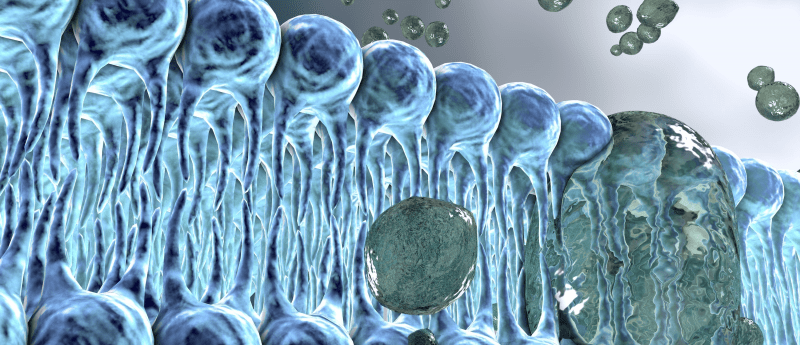Gene therapy could utilize new synthetic lipid in DNA transfer

Gene therapy could eventually utilize new synthetic lipid, DiTT4, to transfer DNA into human cells.
Research led by a team from the Martin Luther University of Halle-Wittenberg (Germany) has produced a new lipid compound which may further gene therapy. The compound, coined DiTT4, was able to demonstrate efficient transfection rates, biocompatibility and could be utilized without the use of co-lipids.
Liposome can be produced quickly and efficiently, encapsulating DNA within a biocompatible lipid capsule that can then be delivered to patients, passing into cells via a merger with their own lipid membrane. In the recent paper, published in Biomaterials Science, the new DiTT4 was demonstrated to be biocompatible and did not require a co-lipid to transfect cells, overcoming a major hurdle that has hindered the technology.
“This advantage enables simple, reproducible production, which is necessary for later clinical applications,” explained the lead author, Julia Giselbrecht (Martin-Luther-University Halle-Wittenberg)
Currently, viral vectors are favored for in vivo gene therapy because of their ease of use; however, these vectors can often lead to immune responses within vulnerable patients. Viral vectors can also be expensive and time consuming to produce. The consistent ability to produce an effective treatment, however, has seen viral vectors trump other methods such as liposomes, where the production process can introduce large variability, especially due to the requirement of a co-lipid. This variability can have considerable impacts on the effectiveness of the gene transfer. By forgoing the need for a co-lipid, the DiTT4 is hoped to simplify the production process, resulting in a uniform and reliable product.
Initially testing four different lipids, the team examined the structure and stability of the liposomes formed and the biocompatibility with hemolysis, complement activation and erythrocyte aggregation tests. Following these tests, DiTT4 was chosen for further study and the transfection efficiency of a GFP gene into the chorioallantoic membrane assessed through confocal microscopy.
While promising, the researchers admit there are challenges to overcome and are taking their product into the next stage of preclinical trials to determine the effectiveness of DiTT4 on various cell types.
Sources: Pinnapireddy S, Giselbrecht J, Strehlow B, et al. A triple chain polycationic peptide-mimicking amphiphile — efficient DNA-transfer without co-lipids. Biomater. Sci. doi:10.1039/C9BM01093A (2019) (Epub ahead of print); https://pressemitteilungen.pr.uni-halle.de/index.php?modus=pmanzeige&pm_id=3198;
Have any additional questions about this story? Ask us in the comments, below.
Find out more in these top picks from the Editor:
- New virus purification technique may allow bulk production for gene therapy
- Overcoming challenges in commercial cell therapy manufacturing
- vRNAs found to play important role in lentiviral production